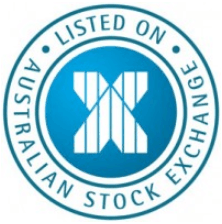
We are in a funny old place right now in the capital markets, and it’s becoming ever more apparent that worked well in 2013 isn’t doing so in 2014.
The only area which seems to be showing the same sort of (negative) consistency in 2014 as it did last year is the emerging markets (EM) complex.
Much of this region continues to get savaged despite the likes the of the Indian, Turkish and South African central banks trying to make the cost of money more expensive and raising interest rates. Trading the Turkish lira is near impossible right now, and after a descent spike higher in the currency, traders have simply said the structural and political imbalances are too compelling to ignore and reinitiated shorts again. It’s also apparent that the multiple interest rates which the Turkish central bank raised (there’s five in total) have not amounted to the degree of tightening that traders initially thought they were reacting too. How wrong we can all be, especially when the announcement is delivered in the ‘twilight zone’, when the US traders are tired and Asia is still waking up.
Is EM the big issue that caused US stocks to plummet? Perhaps, but given US companies only make 5% of earnings from emerging markets it’s hard to really put this move on them, although semantics will always play a key role. We even saw the S&P 500 fall into the FOMC meeting, so it’s hard to directly pin-point the down move on fears around tapering.
Anyone speculating the Fed would hold off from tapering has been sorely disappointed and frankly they need to listen to the Fed, given even the most dovish of voters who have spoken of late have looked past the recent payrolls report. The Fed has said enough times they look at the US and that is their central focus, and there’s even been a few saying the Fed will hold off due to the moves in the stock market. Fed members aren’t day traders and when they see the market not far off all-time highs it wouldn’t have concerned them too heavily.
The Fed likely to cut the pace of QE by $10 billion a month going forward
The Fed should continue as planned and should put a much greater emphasis on inflation going forward. Still, it’s the moves in the US bond market that have been of great interest and the flight to ‘quality’ has been real. If the Fed were concerned about cutting the pace of bond purchases in September due to the tightening of conditions, and you subsequently told them the US 10-year bond would be 21 basis points from the level when they actually announced tapering, I‘m sure they would be extremely surprised. All eyes now fall on whether the 10-year treasury can trade to the 200-day moving average at 2.52% – a level the market has been above since May 2013.
Lower treasury yields can often mean a lower USD; that is as long as the yields fall faster than other developed markets. In this environment we will generally see a further unwind of the JPY funded carry trade, and it’s this issue which I feel is really hurting the likes of the ASX 200, the Nikkei, the S&P 500 and many European markets. Continued outflows of EM are likely this year and if the Fed actually increases the pace of tapering (a real possibility) then we need to question if the outflows will accelerate even further. So for me, the unwinding of the world’s biggest ever carry trade needs to be the more concerning issue. A move to 100 on USD/JPY is likely to be met with concern rhetoric from the BoJ.
China is also another real concern and while it looks as though it won’t be talking defaults of a certain wealth management product for a while, the bears are getting louder and louder. It seems logical that the downside to growth will be cushioned by looser conditions from the PBOC; however the authorities will still be cognisant that total leverage in the economy is just under 240% debt to GDP levels, with corporate China debt at just under 110% of GDP, so the need to deleverage is still a major focus. With real interest rates higher than GDP this is also something the central bank will be focusing on. Today’s HSBC PMI print was revised down ever so modestly to 49.5 and the CSI 300 continues to fall (now down 1%).
Traders gearing up for earnings season
If we look at the ASX 200, the market did very little after the unwind and tracked sideway for most of the day. Earnings season ramps up in the coming days and we should have a very different picture around the state of play by March, as this is a market that simply won’t tolerate companies which miss expectations. This is a market trading on a P/E premium to its long-term average and leave behind those that either miss expectations or those who don’t share the sort of earnings vision that investors currently hold.
European markets look set to see lower levels on open and while traders will have plenty to mull over on the data side, including US Q4 GDP, European consumer confidence, German employment, UK mortgage approvals and net lending; there is also plenty on a corporate level. Google, Santander, Diageo, BsyB and Royal Dutch Shell hit the market with earnings, so it promises to be a fairly eventful day.